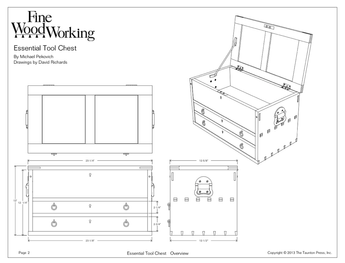Bandsaw Motor Direction Change 220V/110V
Hi Fellow Woodworkers,
I need your help. About 10 years ago, i bought a used 14″ bandsaw and since it came w/o a motor, I purchased a new Dayton motor from Grainger and hooked it up to my 220V curcuit in my basement shop. Everything worked fine for years. I just moved to a new house and, since my garage has 110V only, I rewired the the lead into the motor as shown on the wiring diagram on the connection box to the motor.
Now the motor goes backward. I tried changing the leads black and white wire but it still goes backward. Why did it work correctly for years when it was connected to 220V and now it goes backward when connected to 110V?
Jim















Replies
Gee there are a bunch of brilliant electrician type people here on Knots. I am surprised you have not gotten a response.
Try this. Go here
http://en.wikipedia.org/wiki/AC_motor
and read
Capacitor start motor
and
Read: Permanent-split capacitor motor
Wiki says:
" The starting direction of rotation may be reversed simply by exchanging the connections of the startup winding relative to the running winding.. "
Hope that helps
roc
Give me six hours to chop down a tree and I will spend the first four sharpening the axe. Abraham Lincoln ( 54° shaves )
Edited 8/8/2009 11:21 pm by roc
Edited 8/9/2009 1:36 am by roc
"The starting direction of rotation may be reversed simply by exchanging the connections of the startup winding relative to the running winding.. "Hope that helps.
It probably won't because it may be difficult to determine which danged wire is what.
But if you can get access to the field winding wires which come from WITHIN the motor ie the ones attached to the terminal block from within , and interchange these it should reverse rotation.
I maintain that those not familiar with this sort of thing should get professional help.Philip Marcou
>get professional help<Or have a good fire extinguisher. OR . . . make that two good fire extinguishers.: )Glad the demag works. At least I did something right once.PS: too lazy to get off the couch an go to my files for my notes ( that might change once the biscotti and second pot of coffee hit bottom ) but I seem to remember the start wires are heavier gauge; gotta take faster flow of electrons ( more heat/amps ) until up to speed and the back emf slows things ( electrons ) up and the RUN kicks in. Soooo look for the thicker wires yes ?Hope I make it to the files before something bad happens.rocGive me six hours to chop down a tree and I will spend the first four sharpening the axe. Abraham Lincoln ( 54° shaves )
roc,
Glad the demag works.
Out of curiosity couldn't one just make the loop larger so one could pass larger objects through it? In other words, insert a wire or something to make the loop bigger.
Regards,Bob @ Kidderville Acres
A Woodworkers mind should be the sharpest tool in the shop!
>make the loop larger<Heck I don't know. I say try it. I assume that with a regular low power soldering gun that the field, which is rotating around the wire not with in the whole loop, will not extend very far at all from the wire. Philip had pics of larger demags for machined parts; maybe he could tell you best.On my stereo sub woofer I could measure a mild magnetic field twelve inches or so from the speaker cabinet using a light spring suspended from a thread.This speaker weighs about 65 LB though.Perhaps there are some "Flux Meisters" out there lurking who could say more . . .rocGive me six hours to chop down a tree and I will spend the first four sharpening the axe. Abraham Lincoln ( 54° shaves )
Careful! The loop gets hot because of a high current passing through it. I have never measured it but the resistance of the soldering bit is important. If your wire loop has a low resistance you could destroy the gun and find a use for that fire extinguisher that you hopefully have.Update: I've checked the resistance of one of my bits and it is 0 so that a wire loop would be safe on mine. However I urge you to check yours before you proceed. Incidentally the more turns in the loop the more powerful the magnetic field will be.
Edited 8/10/2009 1:42 am ET by davcefai
I Don't remember my motor theory very well, but I think when it's wired for 110 the windings are in parallel, 220 in series. Would have to do some digging to come up with a more specific answer.
Is there a wiring diagram on the motor label?
One thing to try is to google the make and model of the motor. If that doesn't work, call the place you bought it from. Some of those sales people have a lot of knowledge..
This link may help. The diagrams aren't anything fancy, but you will get the idea.
http://www.metalwebnews.com/howto/elec-mtr/elec-mtr.html
After looking at this site, you may need to swap 5 & 8. To be safe, wait for a few others to reply.
Bill
Gotta go, tornado touched down a few miles from here.
>Some of those sales people have a lot of knowledge..<Nice to know there is competence in the world some where. I wouldn't trust the woodworking sales people around here to call when a special order comes in for me ( often as not I find it hanging on the wall for sale; the only one in the store ) let alone electrical connections.rocGive me six hours to chop down a tree and I will spend the first four sharpening the axe. Abraham Lincoln ( 54° shaves )
The wiring diagram on your motor should show two leads to change the position of their connection. Usually an eyelet or spade like connector on the terminal board in the junction box. It won't be any of the wires you worked with to change the voltage.
Jim, You need to look more closely at the plate where it showed how to change the voltage. It usually is around there that it will say change leads 3 & 8 to reverse rotation. Also look under the plate lid where you make the change.
Jim,
If you look somewhere on the motor's spec plate or the wiring diagram, in or on the wiring box, you should find a short sentence that tells you how to reverse the direction by switching two leads in the wiring box. This information is often not in the same place as the voltage switch info. Grainger motors are almost always clearly marked with this information.
John White
Shop Manager for FWW Magazine, 1998-2007
thanks for your help everyone.
I took another look at the wiring diagram on the plate and it clearly states to swap two of the wires.
I probably should have read all the info on the plate before I began!
Problem solved.
thanks again!
>Probably should have read<That's what is wrong with the world ! People don't read any more. They don't look at the details.Haruummhh aruummhh Haruummhh grumble grumbleMakes me wonder what is going on behind the scenes with the military and the people in power in general. Working from hear say and guess work . . .We are all gonners, the sky is falling I tell you, the sky is falling !OK . . . I got it out. Thanks for listening. I am better now.carry onrocGive me six hours to chop down a tree and I will spend the first four sharpening the axe. Abraham Lincoln ( 54° shaves )
And now you know why women are only half as busy as men...
This forum post is now archived. Commenting has been disabled